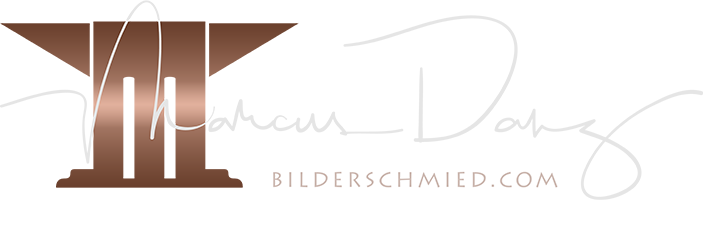Content:
Method 1: The use of adhesive tape
Method 2: The use of photo corners
By using a passepartout, you enhance the noble impression of the image and draw the viewer's attention to the motif. In addition, you protect the print from mechanical influences, because a direct contact with the (acrylic) glass of the frame is avoided.
In the following instructions, we will use test prints to show you two procedures by which you can professionally frame and mount your image(s). The main advantage of the second option is that the print, due to the use of photo corners, does not stick directly to the interleaving paper, thus making it much easier to change the frame later.
Please study the following notes and instruction steps carefully. As you will see, the entire process is actually quite simple - even if you've never framed and mounted a picture yourself before.
Step 01: Prepare the materials you need: Frame, mount, the print, glass cleaner, cloth for wet cleaning, cloth for polishing/drying, tape, ruler, and optionally a pair of cotton gloves and a brush with the softest possible bristles.
Step 02: Remove the packaging from the frame, and pad the table. Next, carefully place the frame glass side down and loosen all retaining clips. Remove the backing, the interleaving paper and the glass.
Step 03: Even if you have a new frame: the glass is usually not free of stains. To clean it, carefully place it on the padded table, and apply some of the liquid glass cleaner.
Step 04: Wipe away any dirt before drying and polishing the glass with the second cloth. Repeat this process with the reverse side, and avoid new fingerprints by using the gloves when turning.
Step 05: Set the glass aside after successful cleaning, and place the mount (face down) on the table.
Step 06: For the correct alignment of print and passepartout you need the corresponding measurements from our Sizing Guide. Alternatively, you can determine these by first aligning the image flush with the lower left corner of the passepartout.
Step 07: Measure the distance between the right edge of the print and the right edge of the passepartout with the ruler (here approx. 10.4 centimeters). Divide the result of the measurement by two and note the value obtained (here 5.2 centimeters).
Step 08: Repeat step 7 with the upper edges of the print and the passepartout. In our example the distance between them is 8 centimeters, so you can note 4 centimeters.
Step 09: Now place the image with the print side down as centered as possible on the inverted passepartout.
Step 10: Use the ruler to correct the position of the print until its entire right edge lies 5.2 centimeters away from the outer right edge of the passepartout. To verify the correct distance, you can measure the left side as well.
Step 11: Proceed in a similar manner with the horizontal edges of the print. Correct their position until the distance to the top and bottom edges of the passepartout is 4 centimeters, and finally check the vertical edges of the print again for correct alignment.
Step 12: To prevent the print from accidentally slipping when it is taped to the mount, fix its position with a heavy glass or similar object.
Step 13: Take the adhesive tape and cut off a strip about half as long as the top edge of the print.
Step 14: Join the print and the passepartout by using the tape, and make sure that the elements do not move relative to each other.
Step 15: Pick up the backing of the frame, place it on the table with the clamps facing down, and align the intermediate paper with the back wall.
Step 16: You can now turn over the passepartout connected to the print, place it on top and align it with the back wall of the frame. Then check whether the passepartout actually covers the edge areas of the print all the way around.
Step 17: If there is still (or again) some dust on the print or passepartout, you can remove it carefully with the brush. Then, put on the gloves to avoid fingerprints, and get the glass onto the frame.
Step 18: Check the flush overlapping of the back wall, intermediate paper, passepartout and glass. Then set on the actual frame, reach with your fingers behind the back wall, and carefully turn everything over.
Step 19: Fix the rear panel to the frame by closing the retaining clips. Depending on the selected thickness of the passepartout and the intermediate paper, a slightly increased amount of force may be required for this.
Step 20: Congratulations! You have just successfully matted and framed your print.
